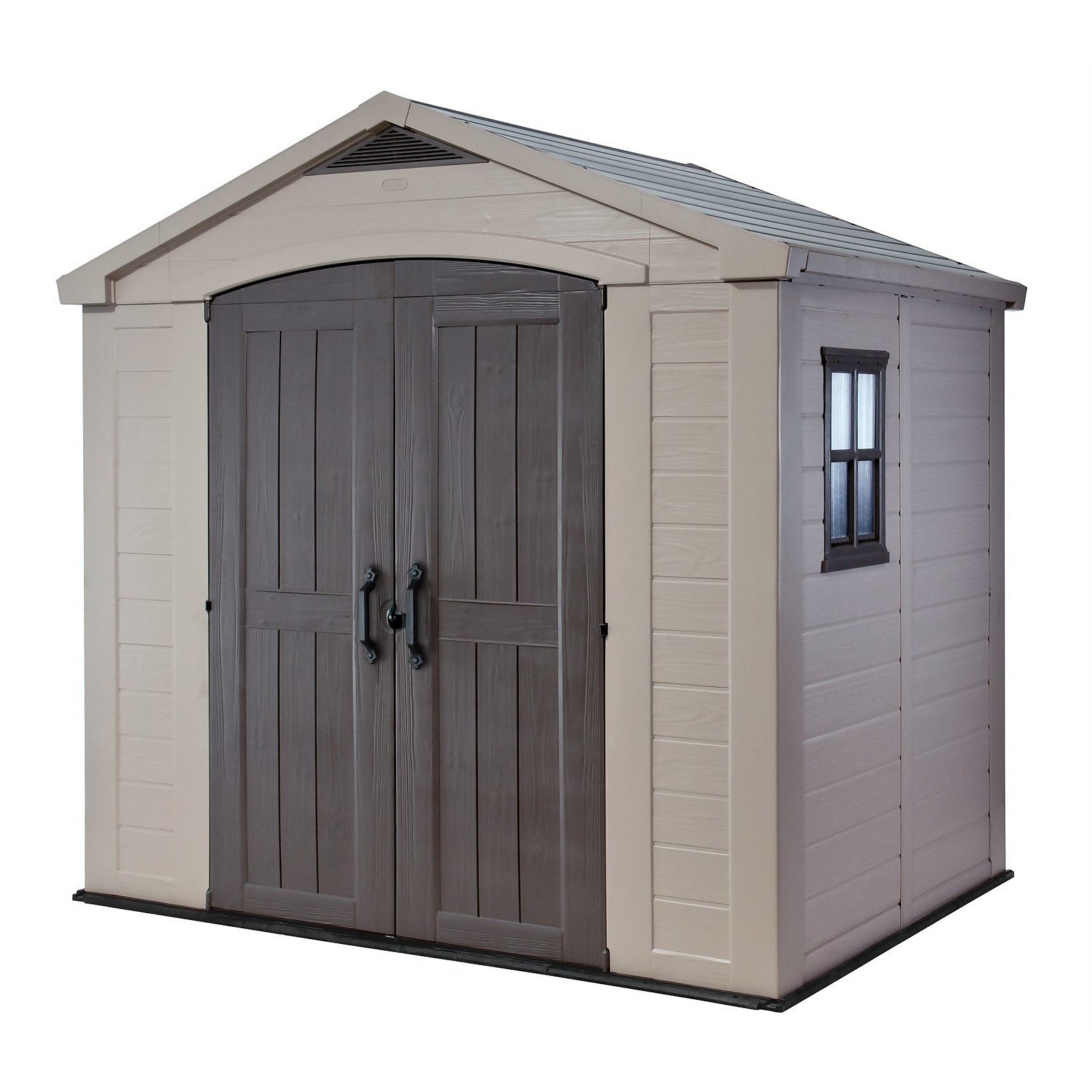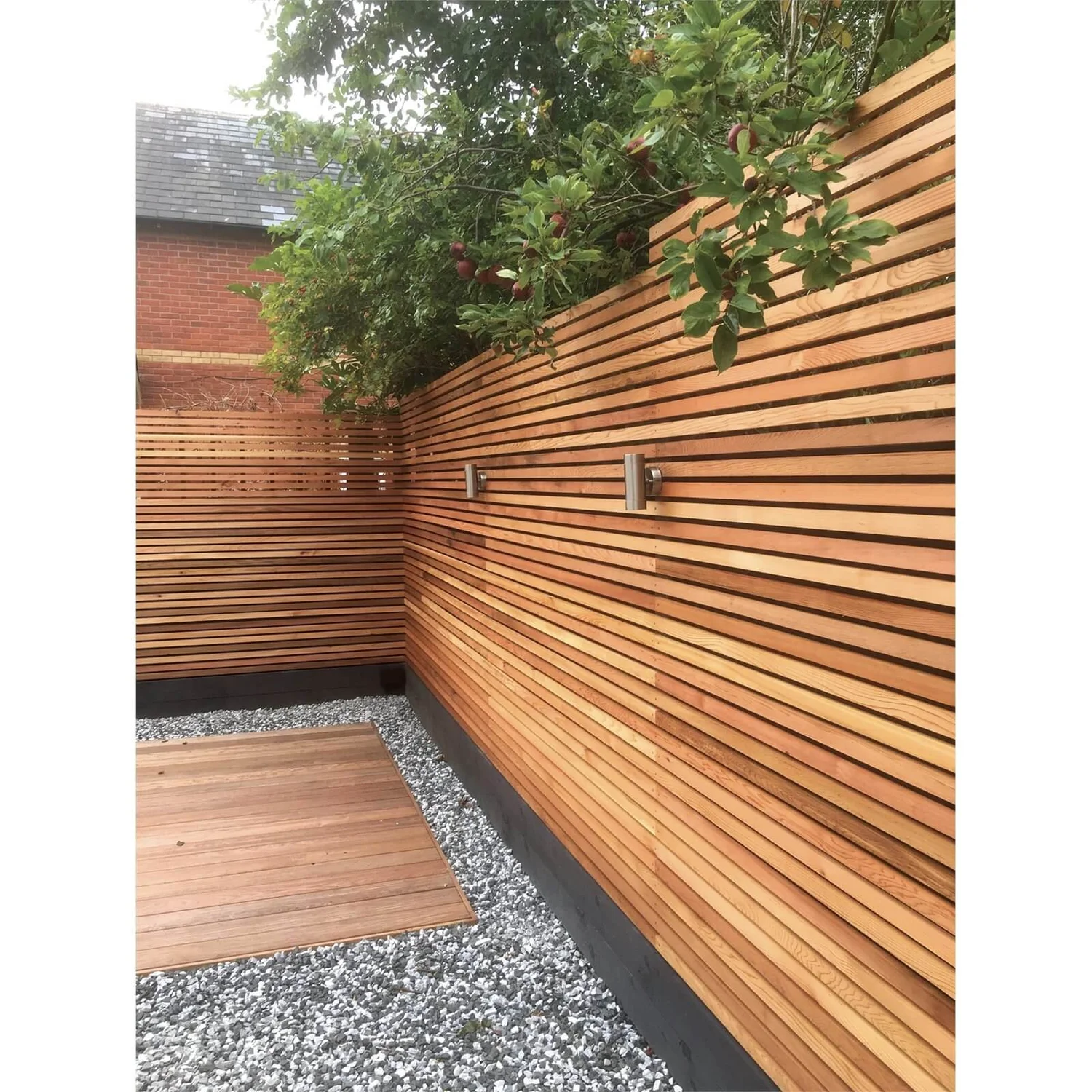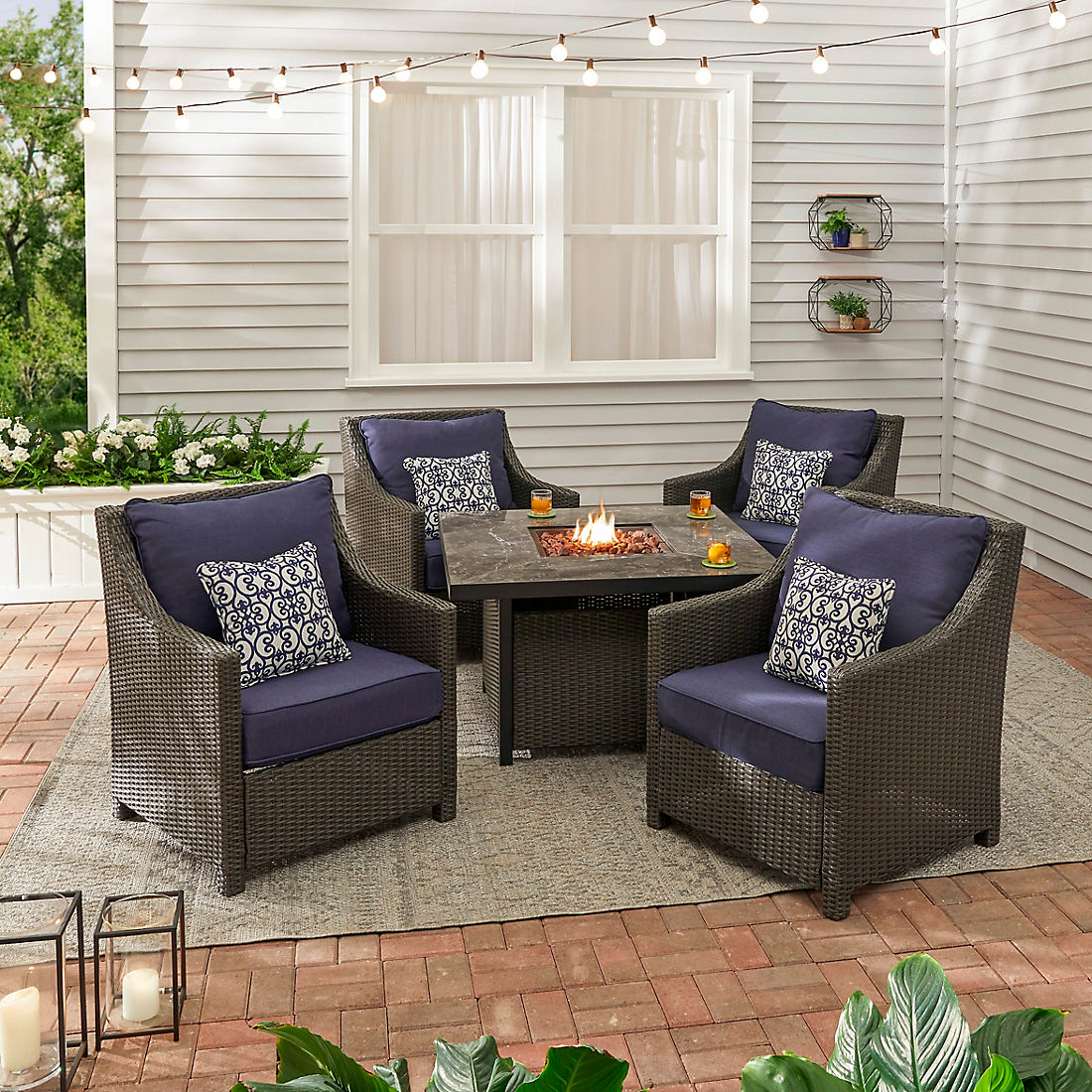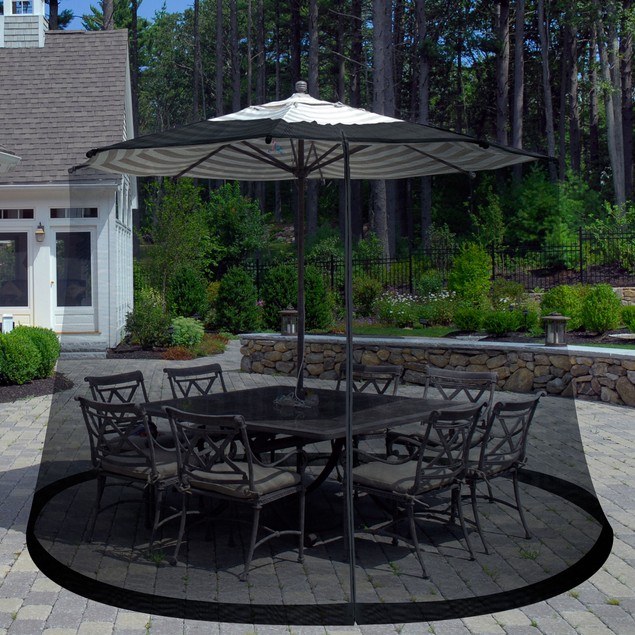Keter Factor Outdoor Garden Storage Shed 8x6ft Beige/Brown
Ideal outdoor storage solution for all garden accessories and equipment, garden furniture including BBQ’s, bicycles and DIY tools.
-
Berkley Jensen Montauk 5PC Fire Chat Set- Blue
Rated 4.78 out of 509Berkley Jensen Montauk 5PC Fire Chat Set- Blue
Rated 4.78 out of 509 -
Peony, Immaculee Seeds and Plants, Flowers
Rated 4.67 out of 503Peony, Immaculee Seeds and Plants, Flowers
Rated 4.67 out of 503 -
Pure Garden Outdoor Umbrella Screen – Black
Rated 5.00 out of 504Pure Garden Outdoor Umbrella Screen – Black
Rated 5.00 out of 504
- Ideal outdoor storage solution for all garden accessories and equipment, garden furniture including BBQ’s, bicycles and DIY tools
- Elegant wood effect exterior with double doors, plus ventilation grills for air circulation
- Heavy duty floor panel with Integral window and skylight for natural lighting
- Made of durable maintenance and fade-free plastic with steel reinforcement
- Assembled external dimensions: 182 x 256.6 x 243 cm (L x W x H); internal dimensions: 162 x 236.5 x 238.5 cm (L x W x H) Shed Footprint (W)248 x (D)178 cm
Additional information
| External Dimensions (H)x(W)x(D) | (W)256.5 x (D)182 x (H)243 cm |
|---|---|
| Internal Dimensions (H)x(W)x(D) | (W)236.5 x (D)162 x (H)238.5 cm |
Beige is variously described as a pale sandy fawn color, a grayish tan, a light-grayish yellowish brown, or a pale to grayish yellow. It takes its name from French, where the word originally meant natural wool that has been neither bleached nor dyed, hence also the color of natural wool.
The word "beige" has come to be used to describe a variety of light tints chosen for their neutral or pale warm appearance.
Beige began to commonly be used as a term for a color in France beginning approximately 1855–60; the writer Edmond de Goncourt used it in the novel La Fille Elisa in 1877. The first recorded use of beige as a color name in English was in 1887.
Beige is notoriously difficult to produce in traditional offset CMYK printing because of the low levels of inks used on each plate; often it will print in purple or green and vary within a print run.
Beige is also a popular color in clothing, such as for men's trousers, as well as for interior design.
Brown is a color. It can be considered a composite color, but it is mainly a darker shade of orange. In the CMYK color model used in printing and painting, brown is usually made by combining the colors orange and black.
In the RGB color model used to project colors onto television screens and computer monitors, brown combines red and green. The color brown is seen widely in nature, wood, soil, human hair color, eye color and skin pigmentation. Brown is the color of dark wood or rich soil.
In the RYB color model, brown is made by mixing the three primary colors, red, yellow, and blue.
According to public opinion surveys in Europe and the United States, brown is the least favorite color of the public; it is often associated with fecal matter, plainness, the rustic, although it does also have positive associations, including baking, warmth, wildlife, the autumn and music.
A garden is a planned space, usually outdoors, set aside for the cultivation, display, and enjoyment of plants and other forms of nature. The single feature identifying even the wildest wild garden is control. The garden can incorporate both natural and artificial materials.
Gardens often have design features including statuary, follies, pergolas, trellises, stumperies, dry creek beds, and water features such as fountains, ponds (with or without fish), waterfalls or creeks. Some gardens are for ornamental purposes only, while others also produce food crops, sometimes in separate areas, or sometimes intermixed with the ornamental plants. Food-producing gardens are distinguished from farms by their smaller scale, more labor-intensive methods, and their purpose (enjoyment of a pastime or self-sustenance rather than producing for sale, as in a market garden). Flower gardens combine plants of different heights, colors, textures, and fragrances to create interest and delight the senses.
The most common form today is a residential or public garden, but the term garden has traditionally been a more general one. Zoos, which display wild animals in simulated natural habitats, were formerly called zoological gardens. Western gardens are almost universally based on plants, with garden, which etymologically implies enclosure, often signifying a shortened form of botanical garden. Some traditional types of eastern gardens, such as Zen gardens, however, use plants sparsely or not at all. Landscape gardens, on the other hand, such as the English landscape gardens first developed in the 18th century, may decide to omit flowers altogether.
Landscape architecture is a related professional activity with landscape architects tending to engage in design at many scales and working on both public and private projects.
Keter or Kether (Hebrew: , Keṯer, lit. "crown") is the first of the ten sefirot in the Kabbalistic Tree of Life, symbolizing the divine will and the initial impulse towards creation from the Ein Sof, or infinite source. It represents pure consciousness and transcends human understanding, often referred to as "Nothing" or the "Hidden Light". Keter is associated with the divine name "Ehyeh Asher Ehyeh" (אֶהְיֶה אֲשֶׁר אֶהְיֶה), meaning "I Am that I Am", which was revealed to Moses from the burning bush, and it embodies the qualities of absolute compassion and humility. Its meaning is "crown", and it is interpreted as both the "topmost" of the Sefirot and the "regal crown" thereof.
Keter is positioned at the top of the Tree of Life, sitting above and between Chokmah on the right and Binah on the left, and above Tiferet. It is often depicted with three primary paths: one leading to Chokmah, another to Binah, and the third to Tiferet. This positioning highlights its role as the source from which wisdom (Chokmah) and understanding (Binah) emanate, and it emphasizes its connection to beauty and harmony (Tiferet), thereby facilitating the flow of divine energy through the sefirot.
Keter is called in the Zohar "the most hidden of all hidden things". Moses ben Jacob Cordovero describes Keter as the source of the Thirteen Attributes of Mercy, derived from a verse in the Book of Micah. These attributes emphasize compassion, forgiveness, and humility. Cordovero also outlines ethical behavior associated with Keter in his work The Palm Tree of Devorah, encouraging purity of thought and actions, such as always turning one's ears to hear good and avoiding anger.
In Western esotericism, Keter is linked to the initial point of divine emanation, representing pure formless consciousness. It is associated with various divine and mystical figures, such as the archangel Metatron and the Tetramorph of the Holy Living Creatures.
Outdoor(s) may refer to:
- Wilderness
- Natural environment
- Outdoor cooking
- Outdoor education
- Outdoor equipment
- Outdoor fitness
- Outdoor literature
- Outdoor recreation
- Outdoor Channel, an American pay television channel focused on the outdoors
- Outdoor Products
A shed is typically a simple, single-storey (though some sheds may have two or more stories and or a loft) roofed structure, often used for storage, for hobbies, or as a workshop, and typically serving as outbuilding, such as in a back garden or on an allotment. Sheds vary considerably in their size and complexity of construction, from simple open-sided ones designed to cover bicycles or garden items to large wood-framed structures with shingled roofs, windows, and electrical outlets. Sheds used on farms or in the industry can be large structures. The main types of shed construction are metal sheathing over a metal frame, plastic sheathing and frame, all-wood construction (the roof may be asphalt shingled or sheathed in tin), and vinyl-sided sheds built over a wooden frame. Small sheds may include a wooden or plastic floor, while more permanent ones may be built on a concrete pad or foundation. Sheds may be lockable to deter theft or entry by children, domestic animals, wildlife, etc.






Reviews
There are no reviews yet.